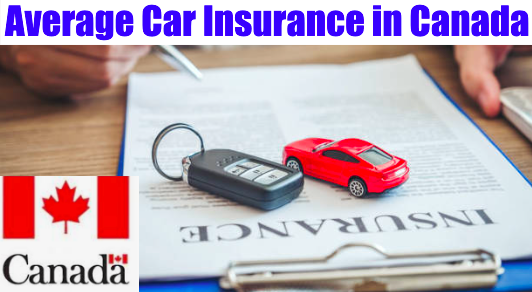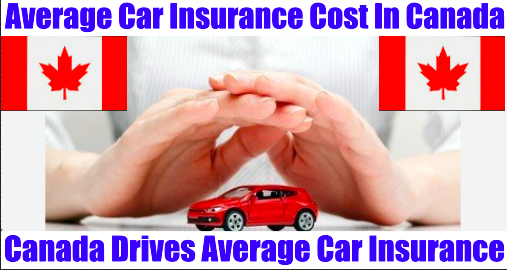What is the average Car insurance premium for Canadians?
The average amount Canadians pay for auto insurance varies by province. For instance, drivers in Ontario and English Columbia can hope to pay about two times as much as those in Quebec and Sovereign Edward Island.
So what is the average auto insurance rate you can expect to pay? Here’s a closer look at average rates by province across the country:
- British Columbia
- Ontario
- Alberta
- Saskatchewan
- Newfoundland and Labrador
- Manitoba
- Nova Scotia
- New Brunswick
- Prince Edward Island
- Quebec
By law, insurance is required to drive on our roads. We Canadians pay a lot of cash for this insurance, contingent upon your region of home and numerous different elements (age, driving record, vehicle type, and so on.) Average Car Insurance
Unfortunately, auto insurance premiums continue to rise, making it more difficult than ever from a financial standpoint for many people to obtain insurance.
We should investigate the variety in normal accident protection charges across Canada, look at where expenses are on the ascent, and check whether the pattern is probably going to switch.
Note: IBC works out normal expenses for every region by separating complete charges by all out confidential vehicles per area. Average Car Insurance
Cigna Worldwide Health Care Insurance

Average Car Insurance Premium Rates by State
Note: The following rates and figures are current as of March 2020
British Columbia – $1,832
Let’s start with the bad news. Drivers in Canada’s westernmost territory pay the most noteworthy expenses in the nation, averaging simply more than $1,800 each year.
This is up more than $700 since 2015, a whopping 63% increase in less than five years! Unlike other provinces, insurance in BC is administered by the Crown Corporation (ICBC).
ICBC’s premiums have been a hot topic in BC lately, especially for young drivers, who have been hit particularly hard, with BC attributing the huge premium increases to the insurer’s soaring expenses, including injury cases, claims, and vehicle fix liabilities. For BC drivers, however, the northward movement of insurance premiums is not comforting.Average Car Insurance
There is a push in BC to increase the number of private insurers to increase choice and lower premiums through competition, but so far BC does not appear to be willing to give up its monopoly on auto insurance.Average Car Insurance
There is some good news, however!
In February 2020, the BC government announced the introduction of a no-fault program. Under no-fault insurance, accident victims will no longer be able to seek damages unless the accident was caused by street racing, negligence, impaired driving, or a defective/poorly repaired vehicle.
Instead, victims will receive benefits and compensation directly from ICBC. This means that after May 1, 2021, BC drivers will see a 20% reduction in their base and optional rates. Up to that point, ICBC rates won’t increment.Average Car Insurance
ICBC also offers discounts to drivers who drive minimally (e.g., use fewer kilometers), vehicles with autonomous emergency braking systems, and vehicles with anti-theft devices.
Ontario – $1,528
Ontario, the most crowded region, is the second most costly territory with regards to accident protection. The average auto insurance policy in Ontario costs more than $1,500 per year; in 2015, Ontario had the highest average premium at $1,281 per year, but a $247 increase doesn’t seem too bad compared to B.C.
Experts point to rampant fraud as the main reason for the premium increase. A generous accident benefit program is also a factor.
In Ontario, it is mandatory to purchase auto insurance, but unlike in BC, you can find the best deal through private insurance companies. Take the time to compare brokers and get competitive rates for the coverage you need.Average Car Insurance
The Ontario government announced a “transformation” measure last April, but it doesn’t seem to be saving drivers money: in February 2020, an average premium increase of 1.56% was implemented, bringing the typical premium from $1,505 to $1,528 according to our observations. Some insurers raised their rates by as much as 11%.
Alberta – $1,316
Alberta, known for its big skies, became the most expensive province to insure if you want to hit the Calgary Trail in your shiny new F150. Alberta currently has the third highest auto insurance rates in Canada, with an average annual premium of $1,316. That’s a $300 increase from 2015 ($1,004), when Alberta was fifth in the country. What happened to the “Alberta Advantage”?
The past commonplace government restricted private auto safety net providers’ rate increments to a limit of 5% each year, yet Alberta’s UCP government nullified this in 2019, likely stirring up a lot of fulfillment for guarantors. As such, it does not appear that rates will be going down anytime soon.
Saskatchewan – $1,235
In Saskatchewan, another province with long prairie roads between destinations, drivers’ insurance rates have been raised by half; in 2015, Saskatchewan drivers were paying an average of $1,049 per year. Now the average increase is $186.Average Car Insurance
Like BC, Saskatchewan is run by a province-run auto insurance agency (Saskatchewan Government Insurance), so unfortunately, we pay whatever they demand. You can’t shop around. All drivers in the province are required to carry third-party liability insurance of up to $200,000, but a report released in May warned that a significant portion of drivers in the province are “underinsured”.
Newfoundland and Labrador – $1,168
Newfoundland and Labrador has the highest jump in insurance premiums in the country, despite its relatively small population. Newfoundland & Labrador’s premiums have jumped 55% in five years, making it the fifth most expensive province in Atlantic Canada. What are the causes? Some point to large compensation payments for relatively minor injuries as the cause. Newfoundland and Labrador have adopted a “tort system” that allows people to sue at-fault drivers for pain and suffering, lost wages, and other damages resulting from accidents.
Manitoba – $1,140.
This province of a thousand lakes is also home to an annual insurance premium of just over $1,140. Compared to other provinces, Manitoba’s average premium of $1,140 is standard.
The extensive Grassland Area works much the same way to adjoining B.C., where the Crown Organization issues collision protection; B.C. even designed a no-fault system modeled after Manitoba’s.
Because of the government monopoly, there is no recourse (other than not driving) if you don’t like the premiums. On the bright side, the province’s Motor Property Insurance (MPI) department is proposing a 0.9% rate cut in 2019, which would be the first overall rate cut in eight years.
Nova Scotia – $891.
Since the 2003 accident coverage changes, Nova Scotians have profited from probably the most minimal collision protection rates in the country. Driving history has a significant impact on auto insurance premiums in Nova Scotia. The coverage you select when you purchase your policy also has a significant impact on your premiums.Average Car Insurance
All things considered, Nova Scotia drivers can hope to pay about $891 each year for accident protection, up from $735 each year only quite a while back.Average Car Insurance
New Brunswick – $867.
Auto insurance premiums will increase by up to 22% in 2020. For the beyond five years, New Brunswick occupants have delighted in sub optimal charges, up from $728 each year in 2015. Due to an increase in insurance claims, primarily caused by distracted driving, the province has opted to raise premiums almost across the board.
The current average premium is $867, but the average premium increase is 12%. This means that within a year the average premium will be $971 per year, overtaking Nova Scotia.
Nova Scotia, currently $891, jumped from $735 in five years, while New Brunswick went from $728 to $867 in the same period. Prince Edward Island made the biggest jump, from $695 in 2015 to $861 today.
Prince Edward Island – $861
Private insurance in Prince Edward Island has kept auto insurance rates down for many years. PEI has also been one of the provinces with the lowest number of accidents in the country, and therefore pays fewer claims.Average Car Insurance
Despite the declining number of claims, premiums have risen from $695 in 2015 to $861 per year now. This is the second lowest average premium in the nation.
Quebec – $717.
Here is one of those rare instances where the bottom of the list is the best position. Drivers in Quebec partake in the most reasonable protection rates in the nation – not exactly around 50% of the normal for drivers in BC and Ontario. Quebec paid an average of $642 in 2015, but now pays an average of only $75.
So why are insurance premiums so low in Quebec? According to some, Quebec’s insurance regulations are not as strict as those in other provinces. In addition, Quebec has limits on bodily injury claims, which leads to lower rates for drivers. In addition, Quebec uses a combination of public and private insurance companies, which allows drivers to hunt around for the most affordable insurance.
Insurance rates vary across Canada, and some provinces require car owners to purchase a specific insurance package consisting of mandatory coverage, so you can see how the car insurance situation varies across Canada. Ultimately, you need to be aware of the specifics in your area as well as what you can do to reduce your costs.
Beneath, every one of the rates for each region summed up:
| Average Insurance Premiums | Per Years |
| British Columbia | $1832 |
| Ontario | $1528 |
| Alberta | $1316 |
| Saskatchewan | $1235 |
| Newfoundland and Labrador | $1168 |
| Manitoba | $1149 |
| Nova Scotia | $891 |
| New Brunswick | $867 |
| Prince Edward Island | $816 |
| Quebec | $717 |
4 Easy Ways to Reduce Your Auto Insurance Costs
Most states have certain criteria that are considered when applying for auto insurance. It is important to know that many of the factors used to calculate your premium are out of your control.
However, you can control some factors, unless you move to another county. The following tips can help you lower your auto insurance. Average Car Insurance
1. shop around, request quotes, and compare prices.
Be prepared to bargain and compete with other insurance companies. Insurance companies are competing for your business, so ask them to work harder for it. Unfortunately, this strategy is not helpful in BC, Saskatchewan and Manitoba.
2. pay only the compensation you need.
As mentioned above, Canadian law mandates some coverage, such as liability and comprehensive coverage. However, if your province’s mandatory coverage allows, you may want to consider removing things like collision coverage if the resale value of your vehicle is low.
3. combine insurance
If you already have homeowners insurance, you may be able to save more by integrating it with your vehicle insurance. Average Car Insurance
4. choose an appropriate vehicle
Cars with adequate safety features (airbags, brake assist, etc.), higher crash test scores, and less powerful engines tend to have lower premiums. Also, vehicles that are frequently stolen in Canada will have higher premiums. Average Car Insurance
